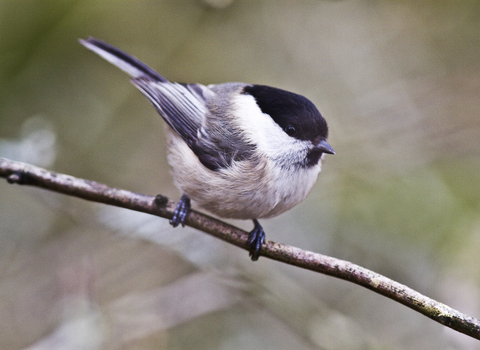
©Harry Hogg
Willow tit
The willow tit lives in wet woodland and willow carr in England, Wales and southern Scotland. It is very similar to the marsh tit, but has a distinctive pale panel on its wings.
Scientific name
Poecile montanusWhen to see
January to DecemberSpecies information
Category
Statistics
Length: 12cmWingspan: 19cm
Weight: 12g
Average lifespan: 3 years
Classified in the UK as Red under the Birds of Conservation Concern 5: the Red List for Birds (2021). Priority Species under the UK Post-2010 Biodiversity Framework.
Habitats
About
The willow tit is strongly associated with wet woodland and willow carr growing in wetlands, bogs and around gravel pits. It is so similar to the marsh tit that it was not recognised as a separate species until 1897. Willow tits eat mostly insects, but will also eat berries and seeds when food is scarce in the winter. They use their small bills to excavate nest holes in decaying wood, which is unusual among the tit family. The female lays between six and eight eggs in a clutch.How to identify
The willow tit is black, pale brown and white in colour, and is easily confused with the marsh tit. However, it has a pale panel on the wings and a sooty-black cap and bib. It has a distinctive, nasal 'zee, zee, zee' call, which is often the most reliable way to identify it.Distribution
A resident of England, Wales and southern Scotland.Did you know?
Willow tits excavate their own nest holes in standing, decaying birch and willow, and use the resulting woodchippings as the base of their nest.Watch
Willow Tit (https://vimeo.com/453714579)
Willow Tit by John Bridges
